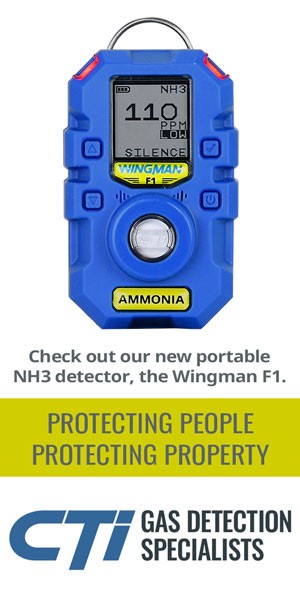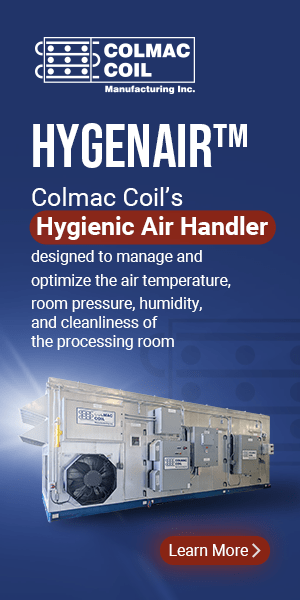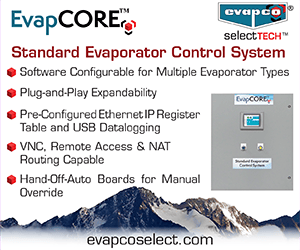Real or Virtual?
BY KEM RUSSELL

For the peaks I had not attempted, I searched on the internet for information on the trailhead location, trail conditions, and pictures/videos. Using an app on my cell phone I planned out and created virtual routes, some of which were off-trail. Five of the peaks I did with either one of my son’s or a daughter, and four I did alone. The actual “real” hiking of these peaks was enjoyable and I learned more doing them than I did only experiencing them “virtually”. However, the virtual information greatly helped me be more prepared for the real experience.
During the last several months all of us have had to experience many real-world activities virtually. One of the first major industrial refrigeration events impacted was the IIAR annual conference. Fortunately, knowledgeable and dedicated people worked hard to provide the IIAR virtual conference. Just recently RETA also successfully hosted its annual conference virtually. Not being able to go to the conferences to socialize, participate, and see new advancements in the exhibit halls was disappointing. But participating in the IIAR and RETA virtual conferences still provided a valuable learning experience.
As the world and our lives morphed I found more and more opportunities to participate in virtual meetings and presentations. As information about virtual opportunities has spread, people who have not had the opportunity to be involved in organization meetings have, many for the first time, been able to participate and increase their knowledge by the experience. I know more than a few refrigeration operators who have never been able to take advantage of IIAR or RETA conferences or meetings, for whatever reasons, who now virtually have the chance to learn more in their field of industrial refrigeration.
There have been many lessons learned as we all have participated in these virtual experiences. One thing to understand is that none of the virtual presentations I, and likely you, have participated in have been produced by a multi-million-dollar theatrical production company. Those putting on and participating in virtual presentations have been learning, sometimes with great frustration, what works and what doesn’t in an attempt to stay connected and continue to learn while in our isolation.
In this virtual world, one of the first lessons I learned was that trying to do audio and visual for all participants, or even some, sometimes doesn’t work, and that can change from minute to minute. Often the audio works, but the download and upload speed of video results in poor quality, or no video. This varies with location, speed, and stability of the internet connection.
This lesson struck home when I and a colleague did an internet connection test for an upcoming training class. Due to COVID-19 restrictions and guidelines, we couldn’t go to the facility, nor could they come to us. So the facility, along with us, decided that doing the required training virtually was the only way to get it done. We were successful in establishing an audio connection with the lady at the facility, but it was very poor. We could only catch about half of what she said, and she, us. Fortunately, she had a landline phone with a speaker, which worked great. Audio problem solved. Then we did a test of a sample PowerPoint and linked video.
The PowerPoint seemed to work well, but when we clicked to play a linked video, we waited for her reply. And we waited and waited. Finally, she replied, “All I see is a black square in the middle of the screen”. Hmm, that’s not good. Then after about a minute, she said “Now I can see the video, but it’s very choppy and hard to watch or hear.”
We could run the PowerPoint, communicate using a speakerphone, but could not play any videos. In many of the virtual presentations you attend, videos may be a large part of the learning experience and enhance the knowledge of participants about what is being presented. Whether it’s rebuilding a valve, a pump, examples of how to approach an ammonia leak, etc., actually seeing it, even virtually is valuable.
What did we do? We loaded all of the videos onto an internet transfer program for download, and they could have them “onsite” to play. We also developed a playlist for which videos to play, and when. With that problem solved we were ready to do the virtual class when the day and time arrived. However, on the day of the class, the internet provider had a major problem and there was no internet over a large area of the State for several hours.
Technology is great when it works. Don’t give up.
Another lesson learned has to do with audio. During IIAR and RETA conferences you likely noticed that participants, other than the presenter and host were “muted”. At the beginning of the COVID-19 “virtual world,” some presentations attempted to have audio input available to all persons on the call. The result was that some people coughed, moved their chair, the dog barked, the kids yelled, etc. and everyone else on the call heard the noise, which detracted from the presentation. I would guess most people didn’t realize or even think about it that the sounds coming from their COVID-19 protected location were being transmitted to everyone.
Major virtual presentations will have participants muted, but your participation can still occur by clicking the “Hand Raised” tab, the “Chat” tab, or the “Q/A” tab. Using one of these access methods allows participants to ask questions of the presenter, usually during the question and answer portion of the presentation. Take advantage of this great opportunity to learn and understand more about the topic, in a much less threatening “virtual” environment. One caution I would give to hosts and presenters is that sufficient time should be allowed for questions to be asked, or some means planned for questions to be addressed later after the presentation is over. I am fairly fast on the keyboard, but during some of the presentations at a recent virtual conference, the host only allowed a few seconds for questions, which was much too short for me to type in a question. Maybe I should have just submitted “WAIT!!”
Still, this is a great opportunity for anyone to advance their understanding by watching and then asking questions during virtual presentations. Yes, during the past months some presentations may not have been as good as they might have been, but they are getting better as we all learn how to use new software tools to present and participate in the virtual world.
There are many new opportunities available for anyone who can get on the internet. We can likely advance the knowledge, understanding, and safety of many who work in the industrial refrigeration field by telling them about these opportunities. Some day we will get back out into the real world, hopefully without a mask or being socially distanced. Being personally there engaging in “hands-on” learning and participation is extremely valuable. It won’t be long and we will see a full year of the effects of COVID-19. This is has been one of the great lessons learned due to this COVID-19 experience, we can still learn by participating virtually.













